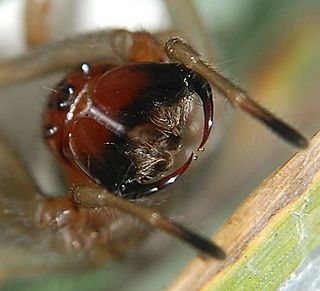Top Qs
Timeline
Chat
Perspective
Cheiracanthium punctorium
Yellow sack spider From Wikipedia, the free encyclopedia
Remove ads
Cheiracanthium punctorium, one of several species commonly known as the yellow sac spider, is a spider found from central Europe to Central Asia. They reach a length of about 15 mm, and their bite can penetrate human skin; the bite has been compared to a wasp sting, perhaps a bit more severe, although susceptible persons can have stronger reactions, like nausea.[1]
Remove ads
Life style

Females build an egg sac of about 4 cm in high grass. It opens below and is aggressively defended.
This section needs expansion. You can help by adding to it. (October 2025) |
Venom

Although its bite is harmless,[1] it is considered the only "seriously" venomous spider in Germany, where it is a rare species, occurring chiefly in the southern half. Notable numbers are found in the Kaiserstuhl region, the hottest part of the country.
Distribution

There is evidence that the species is spreading in northeastern Germany, e.g. Brandenburg. The main reason is an increase in fallow, uncultivated land in these areas, though changing weather patterns leading to increased aridity and less precipitation may also play a role. C. punctorium is most numerous in the steppes of Central Asia.
Taxonomy
The genus Cheiracanthium was transferred from the Clubionidae to the Miturgidae,[2] and then to the Cheiracanthiidae.[3]
References
External links
Wikiwand - on
Seamless Wikipedia browsing. On steroids.
Remove ads




